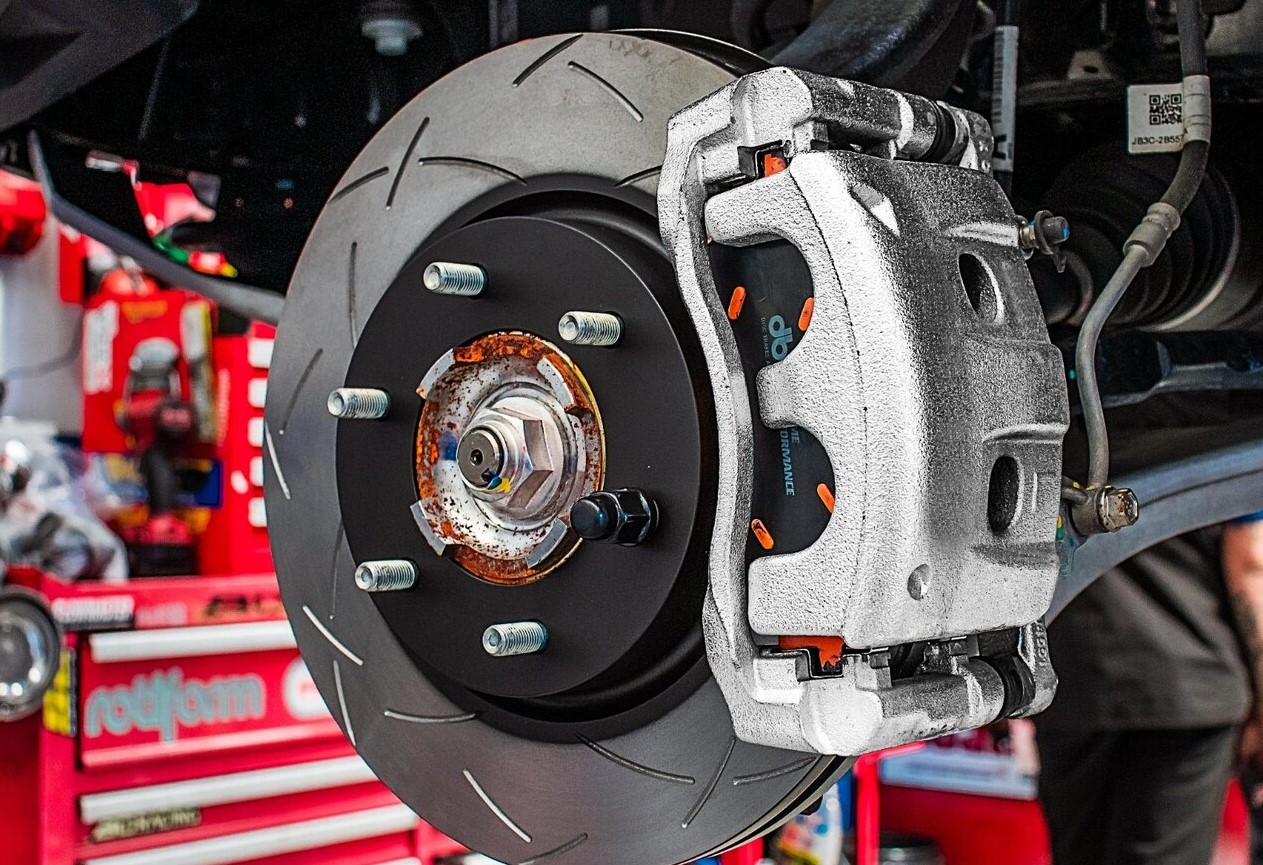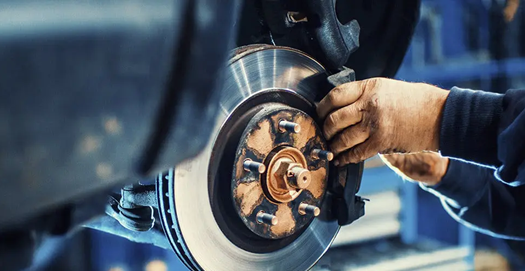
Since the early days of the automotive industry, brakes have been a crucial part of any vehicle. They are the component that guarantees our safety by allowing us to stop in a controlled manner and avoid collisions. In this article, we’ll thoroughly explore the car’s braking system, from its types and operation to the importance of brake fluid and how to make sure they’re in top condition.
Types of Brakes and Parts thereof
What are the Brakes of a Car?
In a vehicle, there are several types of brakes that work together to provide safe speed and stop control. The main types of brakes are disc brakes and drum brakes.
How many types of brakes are there?
Disc brakes are widely used in most modern cars. They consist of a rotor that rotates with the wheel and a caliper containing brake pads. When pressure is applied to the brake pedal, the pads are pressed against the rotor, generating friction and slowing the vehicle. On the other hand, drum brakes are found in the rear of many cars. These consist of a rotating drum and brake shoes that expand when pressure is applied to the brake pedal.
Brake Operation and Importance
How Do Brakes Work?
The operation of the brakes is based on the principle of converting the kinetic energy of the vehicle into heat through friction. When pressure is applied to the brake pedal, the hydraulic system that forces the brake pads or brake shoes against the rotor or drum is activated. This friction reduces the speed of the vehicle to a complete stop.
What is the Importance of Brake Fluid?
Brake fluid plays a crucial role in the braking system, as it transmits the pressure generated by the brake pedal to the calipers or shoes. In addition, brake fluid also acts as a heat transfer medium, preventing overheating of the system. It is essential to maintain the proper brake fluid level and change it periodically to ensure optimal operation of the braking system.

Correct Braking and Brake System Maintenance
How to brake correctly?
Braking correctly is essential to maintain control of the vehicle and avoid dangerous situations. In emergency braking situations, it is advisable to apply firm and constant pressure to the brake pedal. Avoiding abrupt pedal stepping on can prevent wheel locks and skidding.
How Do You Know If Your Brakes Are OK?
Detecting brake system problems early is crucial for safety. Warning signs include squeaky noises when braking, spongy or sunken brake pedal, and unusual vibrations when braking. If you experience any of these symptoms, it is advisable to take your vehicle to a workshop for an inspection.
Brake System Elements
The brake system consists of several components, including brake pads or shoes, discs or drums, calipers, master cylinders and hydraulics. All these elements work together to ensure effective and safe braking.

ABS Brake System: A Crucial Innovation
What Does the Word ABS Mean?
ABS is the acronym for “Anti-lock Braking System”. It’s an advanced technology that has revolutionized the way we brake our vehicles.
What is the Function of the ABS Brake System?
The ABS braking system prevents the wheels from locking up during sudden braking. It works by detecting when a wheel is about to lock up and releasing braking pressure on that specific wheel intermittently. This allows the vehicle’s directional control to be maintained and reduces braking distance on slippery surfaces.
When are ABS brakes activated?
ABS brakes are activated in heavy braking situations, such as in the event of an emergency stop or when braking on wet or snow-covered roads.
Why does the ABS and Brake Light turn on?
When the ABS and Brake light comes on on the dashboard, it may indicate a problem in the brake system, including the ABS system. It can be caused by faulty sensors, problems with electrical connections, or low brake fluid levels.

ABS System Maintenance and Repair
How Much Does It Cost to Repair a Car’s ABS System?
The cost of repairing the ABS system may vary depending on the vehicle model and the nature of the problem. Prices can range from minor repairs, such as replacing sensors, to more complex repairs involving major system components.
What if ABS doesn’t work?
If the ABS system does not work properly, the vehicle will still have conventional brakes that allow it to stop, but the possibility of locking the wheels will increase in situations of intense braking, which could result in loss of vehicle control.
Brake Witness
The brake indicator on the dashboard is a warning light that indicates problems in the braking system. It can be the result of various problems, from worn brake pads to hydraulic system problems. Ignoring this signal can jeopardize brake safety and performance.
In short, car brakes are an essential part of ensuring safe driving. Understanding the different types of brakes, how they work, and the importance of keeping the system in good condition is crucial for any responsible driver. In addition, the innovation of the ABS system has taken braking safety to a new level, reducing the risks associated with wheel locking in critical situations. Don’t underestimate the importance of regular maintenance and attention to warning signs: these are actions that can make the difference between a safe trip and a potential danger.

For more articles like this, click here.









